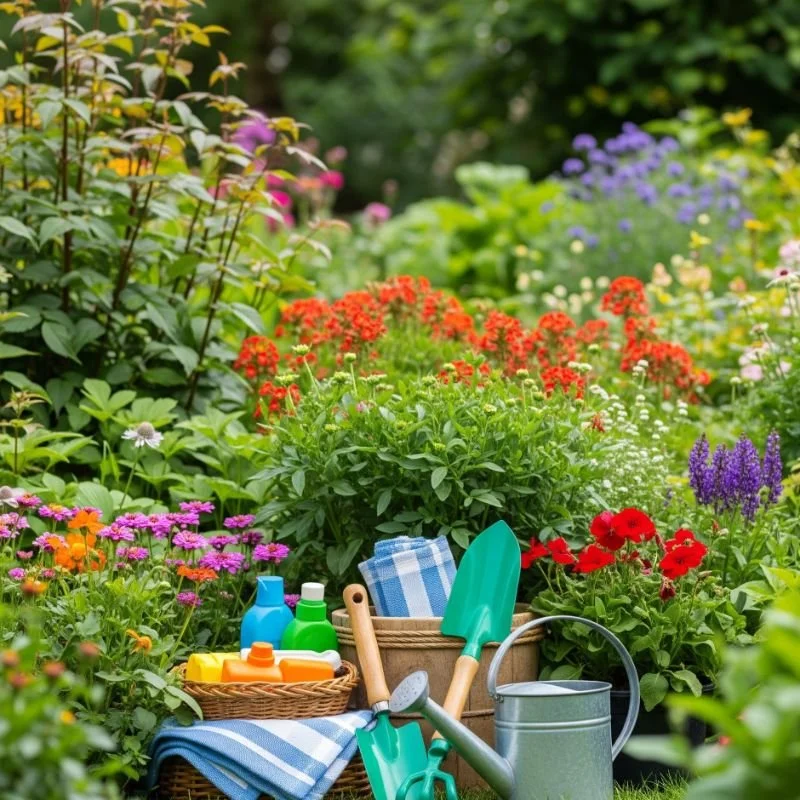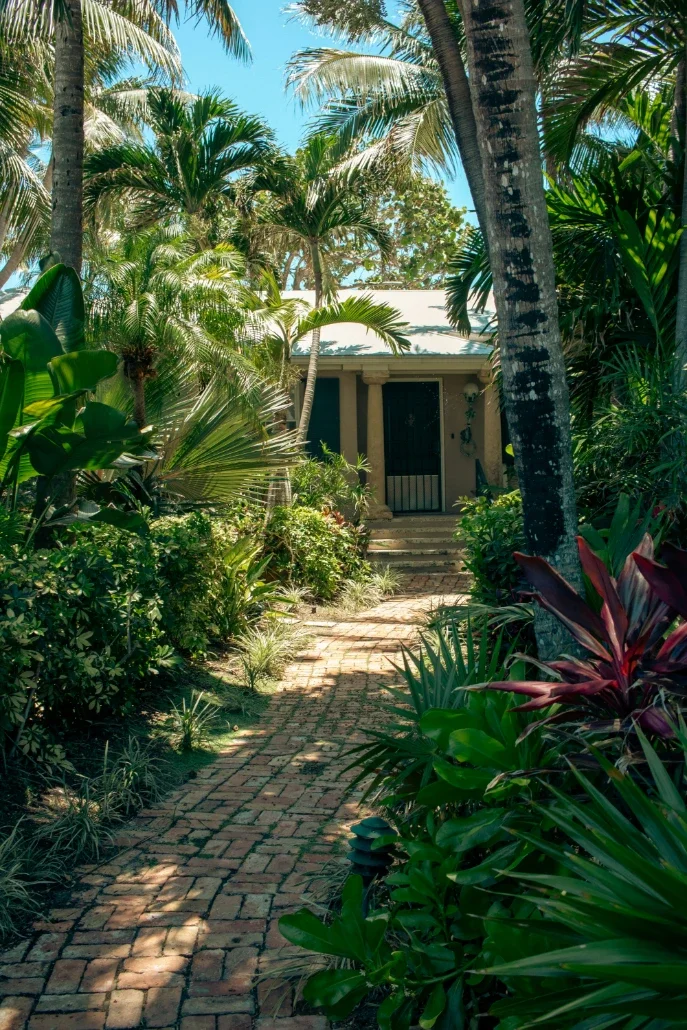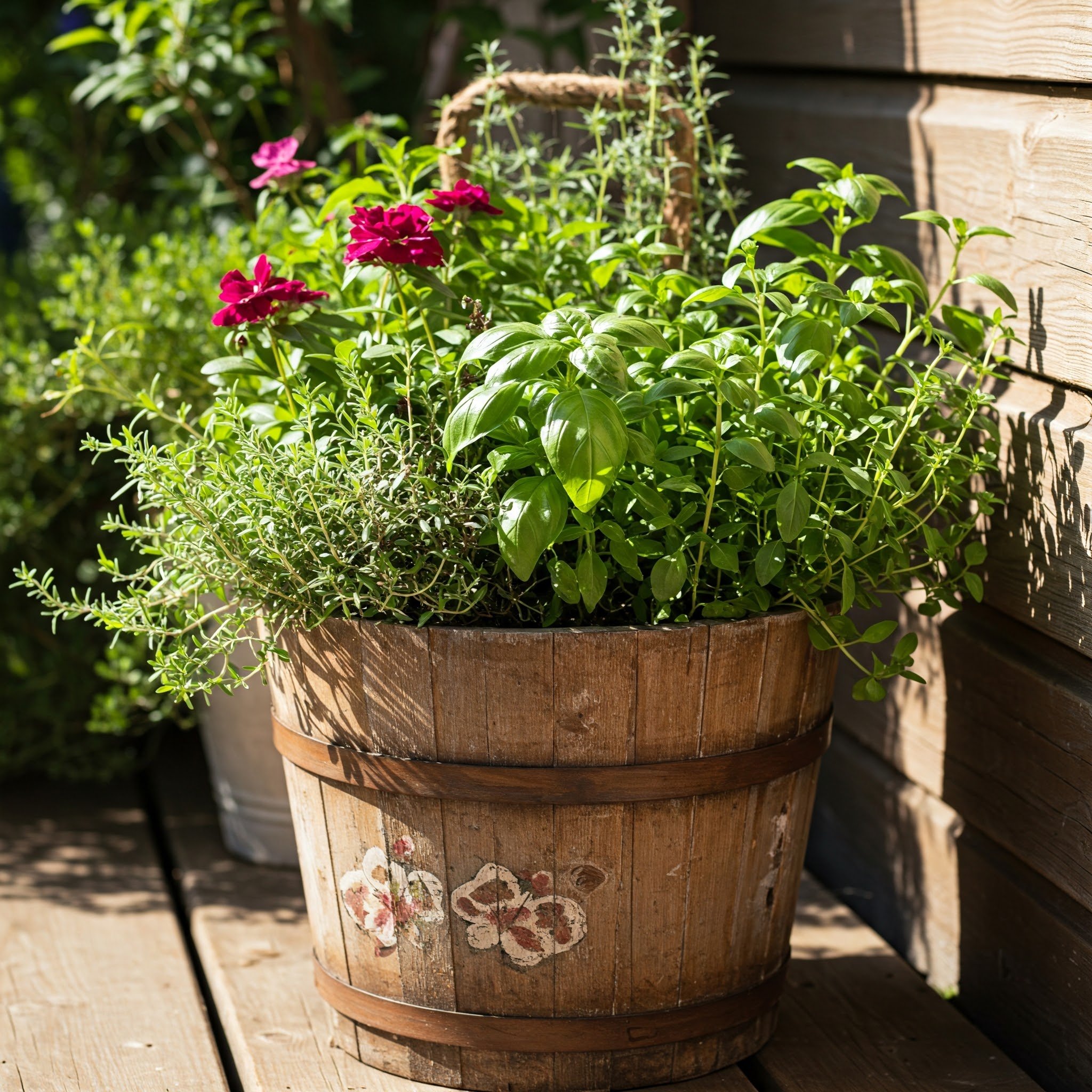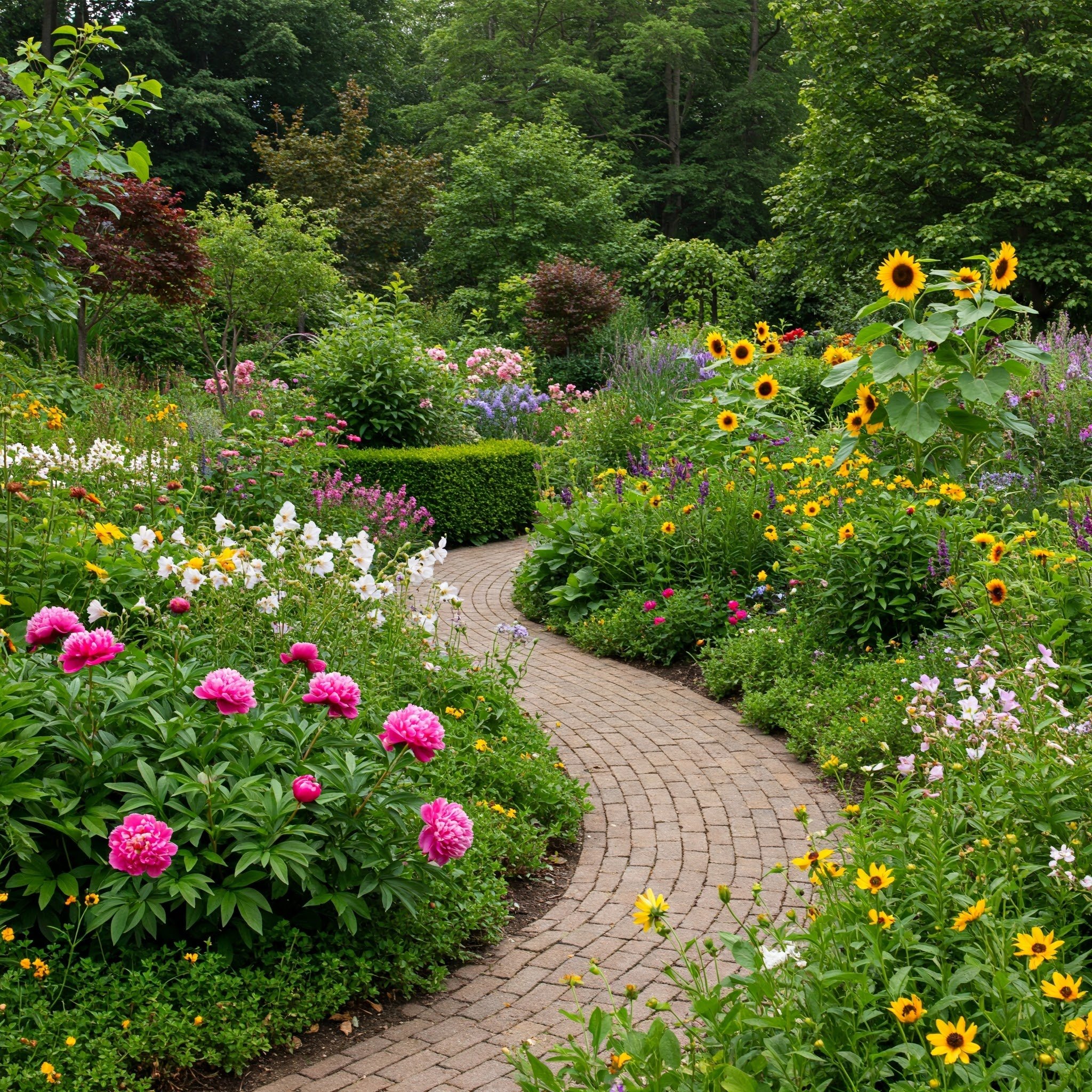Gardening While Pregnant: Safety Tips You Should Know
Discover essential safety tips for gardening while pregnant. Learn how to protect yourself and baby while enjoying your garden.
Hey there, green-thumbed mama-to-be! So you're expecting and still want to keep your garden blooming? That's fantastic! There's nothing quite like getting your hands dirty in the soil while nurturing new life inside you. But hold your horses – before you grab that trowel and start digging away, we need to chat about some crucial safety measures.
Gardening during pregnancy can be incredibly rewarding, both physically and emotionally. It's a wonderful way to stay active, reduce stress, and connect with nature during this transformative time. However, pregnancy brings unique considerations that every expectant gardener should know about. From soil-borne pathogens to physical limitations, there are several factors to keep in mind.
Don't worry though – this doesn't mean you have to hang up your gardening gloves for nine months! With the right knowledge and precautions, you can continue enjoying your passion for plants while keeping both you and your little sprout safe and sound.
Understanding the Risks of Gardening While Pregnant
Soil-Related Hazards You Can't Ignore
Let's face it – soil isn't always as innocent as it looks. That beautiful, rich earth you love to work with can harbor some pretty nasty surprises. Toxoplasmosis is probably the biggest concern here, and boy, it's a doozy! This parasitic infection can be found in contaminated soil, especially where cats have done their business.
The thing is, toxoplasmosis might not cause obvious symptoms in healthy adults, but it can be devastating for your developing baby. We're talking about potential birth defects, developmental delays, and other serious complications. Yikes! That's why it's absolutely crucial to take proper precautions when handling soil.
But wait, there's more! Soil can also contain other harmful bacteria like E. coli and Salmonella. These little troublemakers can cause food poisoning, which isn't fun for anyone, but can be particularly concerning during pregnancy when your immune system is already working overtime.
Chemical Exposure Concerns
Now, let's talk about those garden chemicals that might be lurking in your shed. Pesticides, herbicides, and fertilizers – oh my! Many of these products contain chemicals that could potentially harm your developing baby. Some studies have linked exposure to certain pesticides with birth defects and developmental issues.
The tricky part? Even "organic" doesn't always mean completely safe during pregnancy. Some organic treatments can still pose risks, so it's better to err on the side of caution. When in doubt, skip the chemicals altogether and opt for natural alternatives or simply remove pests by hand.
Essential Gardening While Pregnant Safety Tips You Should Know
Protective Gear is Your Best Friend
First things first – let's gear you up properly! Think of protective equipment as your superhero costume for gardening. Gloves are absolutely non-negotiable. We're not talking about those flimsy things that tear after five minutes. Invest in some heavy-duty, waterproof gloves that'll keep your hands completely protected from soil contact.
Long sleeves and pants might not be the most comfortable option on hot days, but they're worth their weight in gold when it comes to protection. They'll shield your skin from thorny plants, insects, and any soil splashes that might occur during your gardening adventures.
Don't forget about your feet! Closed-toe shoes with good grip are essential. Those cute sandals might look perfect for a garden stroll, but they won't protect you from sharp tools, thorns, or contaminated soil.
Smart Positioning and Body Mechanics
Here's where things get interesting – your body's changing, and your gardening techniques need to change too! That growing belly of yours is going to affect your balance and reach, so it's time to get creative with your positioning.
Raised beds are going to become your new best friends. They bring the plants closer to you, reducing the need for excessive bending and reaching. If you don't have raised beds, consider investing in some container gardening or building a few simple raised structures.
Kneeling pads or garden stools can be lifesavers for your knees and back. As your pregnancy progresses, you'll definitely appreciate having something comfortable to kneel or sit on while tending to your plants.
Hydration and Heat Management
Pregnancy already makes you more susceptible to overheating, and gardening in the sun can push you over the edge pretty quickly. Always, and I mean always, have water within arm's reach. You should be sipping regularly, not waiting until you feel thirsty.
Early morning or late afternoon gardening sessions are your sweet spot. The sun's less intense, temperatures are cooler, and you'll have more energy to enjoy your time outdoors. Midday gardening? Save it for the cooler months!
Safe Gardening Practices During Each Trimester
First Trimester Considerations
Ah, the first trimester – when everything smells weird and you might feel like you've been hit by a truck! Morning sickness can make gardening challenging, but don't throw in the towel just yet. This is actually a great time to focus on planning and lighter tasks.
Soil preparation and planting seeds in containers can be perfect first-trimester activities. You're not dealing with heavy lifting or extensive bending, but you're still nurturing your garden dreams. Plus, watching seeds sprout can be incredibly therapeutic during those queasy days.
Be extra cautious about chemical exposure during this critical development period. Your baby's organs are forming, making this a particularly vulnerable time for toxic exposures.
Second Trimester Gardening Guidelines
Welcome to the golden period of pregnancy gardening! Many women feel their best during the second trimester, with energy levels up and morning sickness hopefully behind them. This is prime time for tackling bigger gardening projects.
Your balance might start shifting as your belly grows, so pay attention to your footing. Avoid climbing ladders or reaching for high branches. Instead, focus on ground-level tasks and maybe invest in some long-handled tools to extend your reach safely.
This is also a great time to set up systems that'll make third-trimester gardening easier. Install drip irrigation, organize your tools within easy reach, and create comfortable workstations.
Third Trimester Adaptations for Gardening While Pregnant
By now, you're probably feeling like you're carrying around a watermelon! The third trimester calls for some serious adaptations to your gardening routine, but don't worry – you can still enjoy your green space.
Container gardening becomes even more important now. Bring the plants to you rather than straining to reach them. Window boxes, hanging baskets, and elevated planters are your friends.
Keep gardening sessions short and sweet. Twenty to thirty minutes might be your limit, and that's perfectly okay! Listen to your body and don't push through fatigue or discomfort.
Tool Safety and Modifications
Ergonomic Tool Selection
Let's talk tools! As your body changes, your regular gardening tools might not feel so comfortable anymore. Long-handled tools are fantastic for reducing bending and reaching. Look for lightweight options with cushioned grips that won't strain your hands and wrists.
Wheeled tools like garden carts can be absolute game-changers. Instead of carrying heavy loads, you can roll them around your garden. Your back will thank you later!
Consider investing in some specialized ergonomic tools designed for people with mobility challenges. Many of these features work wonderfully for pregnant gardeners too.
Power Tool Precautions
Power tools deserve special attention during pregnancy. The vibrations from tools like chainsaws or heavy-duty trimmers might not be ideal, especially as your pregnancy progresses. If you must use power tools, keep sessions short and take frequent breaks.
Electric tools are generally preferable to gas-powered ones, as they eliminate exposure to exhaust fumes. Make sure all your power tools are in good working condition and always follow safety guidelines to the letter.
Plants to Avoid and Embrace
Potentially Harmful Plants During Pregnancy
Not all plants are pregnancy-friendly, unfortunately. Some common garden plants can be toxic if accidentally ingested or can cause skin reactions that might be more severe during pregnancy when your skin is extra sensitive.
Avoid planting or working extensively with plants like foxglove, oleander, or castor bean plants. These beauties are gorgeous but can be dangerous if handled improperly or if young children are around.
Herbs like pennyroyal, tansy, and rue should also be avoided as they can potentially stimulate uterine contractions. Stick to common culinary herbs that you know are safe.
Pregnancy-Safe Garden Favorites
On the flip side, there are plenty of wonderful plants that are perfectly safe and even beneficial during pregnancy! Culinary herbs like basil, parsley, and cilantro are not only safe but can add fresh flavors to your meals.
Flowers like sunflowers, zinnias, and marigolds are beautiful, easy to grow, and completely safe to handle. They'll brighten your garden and your mood without any pregnancy concerns.
Vegetables are generally your safest bet. Tomatoes, peppers, lettuce, and carrots are all excellent choices that'll provide fresh, nutritious food for your growing family.
Creating a Pregnancy-Friendly Garden Space
Accessibility Improvements
Now's the perfect time to make your garden more accessible! Wide, stable pathways are essential as your balance changes and your belly grows. Consider adding handrails along steps or steep areas.
Good lighting becomes increasingly important, especially for those early morning or evening gardening sessions. Solar lights are an easy, eco-friendly option that can illuminate pathways and work areas.
Seating areas throughout the garden give you places to rest and enjoy your space. A simple garden bench or even a sturdy overturned pot can provide much-needed break spots.
Water Access and Storage Solutions
Easy access to water is crucial for both plant care and your own hydration needs. Consider installing additional hose bibs or setting up rain barrels in convenient locations.
Tool storage should be reorganized for easy access. Keep frequently used tools at waist height and store heavy items where you won't need to lift them overhead.
Seasonal Safety Considerations
Spring Gardening Preparations
Spring brings renewed energy and excitement, but it also brings unique challenges for pregnant gardeners. Allergens are at their peak, so be prepared with any necessary medications approved by your healthcare provider.
Soil preparation should be done with extreme caution in spring. This is when soil-borne pathogens are most active, so double up on your protective gear and hand hygiene.
Summer Heat Management
Summer heat can be brutal during pregnancy. Plan your gardening activities for the coolest parts of the day and always have shade available. A pop-up canopy or umbrella can provide instant relief.
Stay extra vigilant about hydration and watch for signs of overheating like dizziness, nausea, or excessive fatigue. When in doubt, head indoors!
Fall and Winter Adaptations
Cooler weather might feel more comfortable, but it brings its own challenges. Wet, slippery surfaces become more dangerous as your balance changes. Take extra care on wet walkways and consider using traction aids on your shoes.
Indoor gardening projects become more appealing as temperatures drop. This is a great time to start herb gardens on sunny windowsills or experiment with microgreens.
When to Seek Help and Know Your Limits
Warning Signs to Watch For
Your body will tell you when it's time to stop, but you need to listen! Severe fatigue, dizziness, shortness of breath, or any abdominal pain should send you straight inside and possibly to your healthcare provider.
Chest pain, severe headaches, or vision changes are red flags that require immediate medical attention. Don't mess around with these symptoms!
Professional Gardening Services
There's absolutely no shame in hiring help! Some tasks are simply better left to professionals during pregnancy. Tree trimming, heavy landscape work, and chemical applications should definitely be outsourced.
Consider hiring a garden maintenance service for the more labor-intensive tasks while you focus on the enjoyable, low-impact aspects of gardening.
Conclusion
Gardening while pregnant doesn't have to be an impossible dream! With the right precautions and modifications, you can continue nurturing your green space throughout your pregnancy journey. Remember that Gardening While Pregnant: Safety Tips You Should Know isn't about limiting your activities but about adapting them for your changing body and your baby's safety. Listen to your body, use proper protective gear, and don't hesitate to ask for help when needed. Your garden will still be there after baby arrives, but right now, your health and safety come first. Happy gardening, mama!
Read next: 15 Unique Gardening Gift Ideas to Impress
Frequently Asked Questions
Q1: Can I garden during my first trimester?
A: Yes, but avoid heavy lifting and chemical exposure during this critical development period.
Q2: Is it safe to use fertilizers while pregnant?
A: Avoid chemical fertilizers and opt for organic compost or natural alternatives instead.
Q3: What gardening gloves should I wear during pregnancy?
A: Use heavy-duty, waterproof gloves that completely protect your hands from soil contact.
Q4: Can I lift heavy bags of soil while pregnant?
A: No, avoid heavy lifting and ask for help or use smaller containers instead.
Q5: Are all herbs safe to grow during pregnancy?
A: No, avoid herbs like pennyroyal and tansy that may stimulate uterine contractions.








